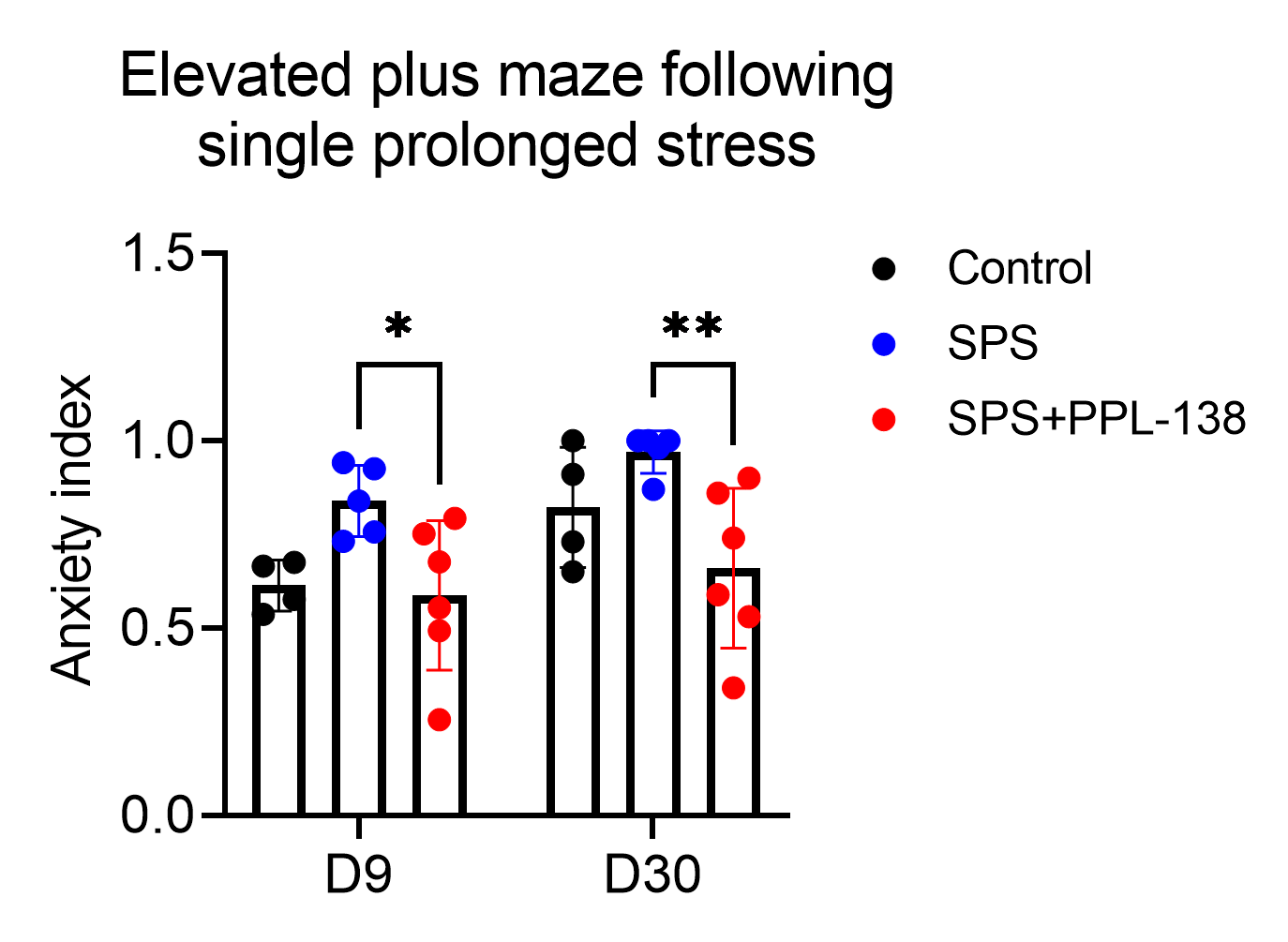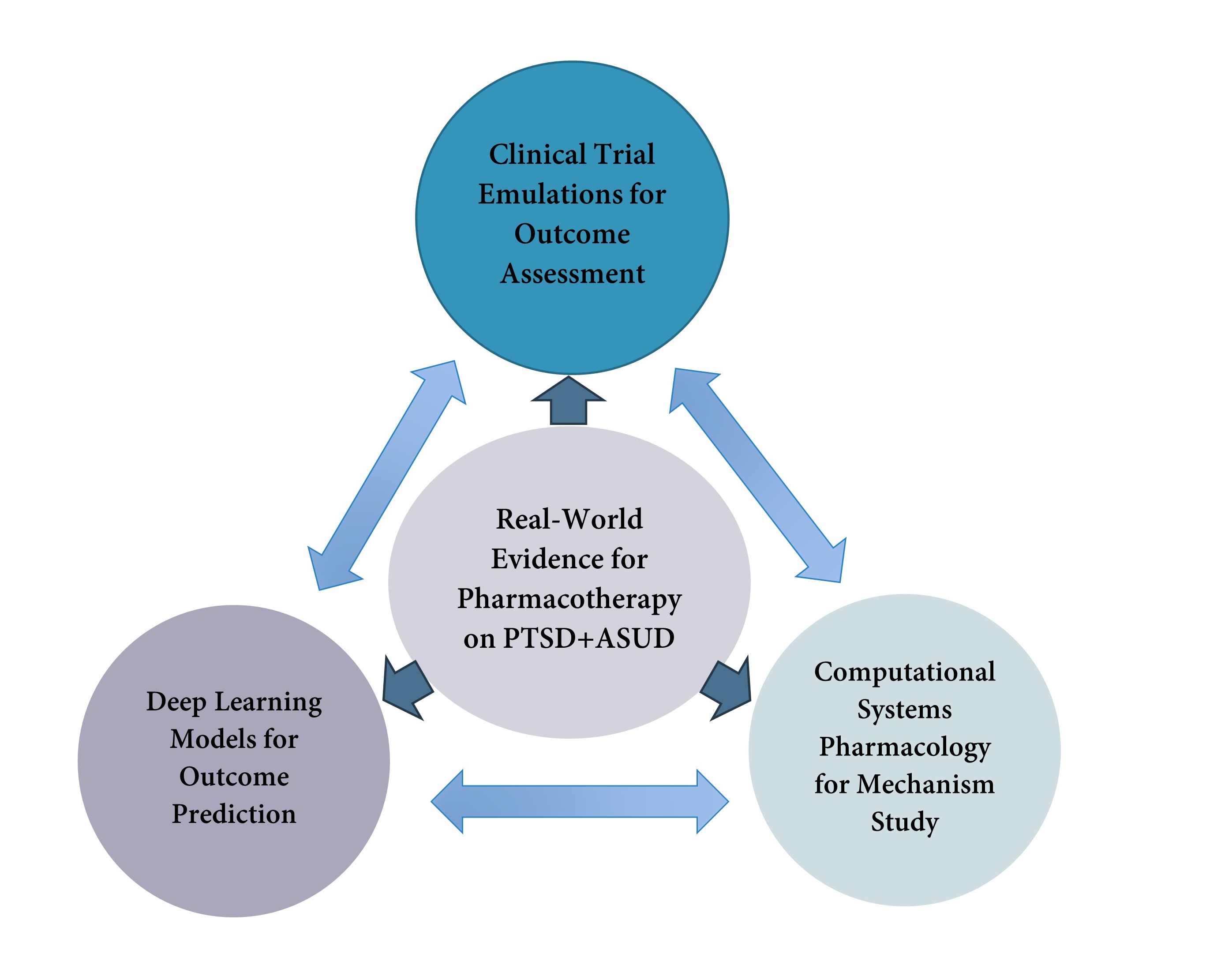Alcohol and Substance Abuse Disorders



Posted December 28, 2022
The Pharmacotherapies for Alcohol and Substance Use Disorders Alliance (PASA) is a consortium funded by the Alcohol and Substance Use Disorder Research Program (ASUDRP) of the Congressionally Directed Medical Research Programs. The goal of the ASUDRP is to explore integrated approaches to address alcohol and substance use disorders and reduce the number of opioid and other substance use-related deaths, through multidisciplinary, team-based research efforts that translate basic knowledge into enhanced clinical pharmacological treatment protocols. There is an urgent need to identify and test new treatments as, currently, there are no U.S. Food and Drug Administration (FDA)-approved treatments for ASUD co-morbid with post-traumatic stress disorder (PTSD) and numerous other psychological disorders. PASA released a three-part Request for Applications (RFA) in May 2022. RFA6a was for a low-cost and short-duration planning grant award to determine the clinical development plan and associated clinical trials needed to advance a compound for FDA approval for the treatment of ASUD comorbid with PTSD or other psychological disorders. RFA6b was for preclinical animal research to determine if a compound would be likely to work for treating ASUD comorbid with PTSD or other psychological disorders. RFA6c was for non-clinical research to identify a pool of compounds that are good candidates for investigating as potential treatments for ASUD comorbid with PTSD or other psychological disorders.
RFA6a: Planning Grant



PASA awarded Drs. MacKenzie Peltier, Ismene Petrakis, and Sherry McKee, Yale School of Medicine, a planning grant to construct a clinical development strategy (Refer to Figure 1) for the use of Brexanolone (BREX) to target concurrent stress-induced alcohol use and PTSD, and to examine appropriate BREX doses. BREX, detailed in work appearing in Psychiatry Research, is already FDA-approved for one indication (postpartum depression) and represents an innovative approach to the clinical treatment of concurrent alcohol use disorder (AUD) and PTSD. Dr. Peltier, the principal investigator, has a strong background in studying mechanisms that underlie substance use. Currently, she is conducting the first open-label study to explore the initial signal of BREX with a follow-up observational period to test the efficacy of administering BREX using mood induction and alcohol self-administration procedures. The team, collaborating with industry partners, hopes to identify the appropriate dose of BREX to target stress reactivity safely and efficaciously for stress-induced alcohol use among Veterans with co-occurring AUD and PTSD.

RFA6b: Preclinical Research
Two preclinical (RFA6b) studies were approved for funding.



Drs. Andrea Cippitelli and Lawrence Toll, both of Florida Atlantic University, and Dr. Kelly Standifer, University of Oklahoma College of Pharmacy, will model the frequent comorbidity of AUD and PTSD in laboratory animals and will evaluate the effects of a non-selective opioid compound, the nociceptin opioid peptide (NOP) receptor/mu partial agonist PPL-138, in its ability to attenuate PTSD-like symptoms and co-occurring escalated features of AUD in rats. Based on the NOP receptor's observed effects on behavior and positive preliminary results (Refer to Figure 2), PPL-138 could serve as a good candidate for further trials, thus providing a promising and critically needed potential treatment for PTSD-AUD comorbidity.
Drs. Irwin Lucki and Caroline Browne, Uniformed Services University, were also funded to study whether (2R,6R)-hydroxynorketamine ((2R,6R)-HNK) is a credible therapeutic for co-morbid AUD and PTSD disorder in preclinical models. The researchers and their team have written in both Nature and Psychopharmacology that (2R,6R)-HNK is a ketamine metabolite that has been shown to effectively increase abstinence and reduce the number of heavy-drinking episodes, but without the gait impairment or rewarding effects associated with ketamine. The investigators also plan to explore the effects of (2R,6R)-HNK on behavioral, physiological, and molecular assessments during chronic stress and alcohol-drinking behavior in rodents. Dr. Lucki and his team have extensive experience in preclinical drug validation for treating psychiatric diseases. (2R,6R)-HNK, currently being developed for treating major depressive disorder, has a known safety profile in humans. The study team has collaborated with the National Institute of Mental Health and the National Center for Advancing Translational Sciences for a feasible and successful translational path for the compound. The investigators hope to determine whether (2R,6R)-HNK can effectively reverse the effects of stress and alcohol consumption in rat models of AUD and PTSD, and reduce stress caused by alcohol consumption and addiction.

RFA6c: Non-Clinical Research



PASA also funded a novel non-clinical research award to Drs. LiRong Wang, Levent Kirisci, and Neal Ryan, University of Pittsburgh, to identify medications with the potential for treating ASUD with comorbid PTSD by analyzing the electronic medical records (EMR) of patients with these disorders. JAMA and both the Proceedings of the Association for Computational Linguistics and arXiv have reported that health care researchers are increasingly using data-mining evidence to provide solutions to real-world problems by analyzing EMR data through deep learning and clinical informatics techniques. Successful development and integration of novel computational tools could be beneficial for developing similar techniques for other disorders/comorbidities. Using EMR for identifying medications is an innovative method that employs deep learning algorithms and statistical analysis tools to analyze data of PTSD/ASUD patients and apply systems pharmacology approaches to discover possible novel molecular mechanisms for medication re-purposing (Refer to Figure 3). Dr. Wang and his co-investigators have significant experience with EMR and a great breadth of knowledge in psychiatry and computer science, including advanced modeling. This study will pioneer the investigation of pharmacotherapies for PTSD/ASUD based on long-term outcomes within EMR, which are not possible with typical randomized clinical trials for FDA approvals of new medications that have much shorter participant follow-up periods. EMR data on very large numbers of patients can significantly impact personalized medication options for treatment through discovery of outcomes not initially considered in the FDA approval process, and for re-purposing of existing medications. This work can also reduce the risk of developing undesired outcomes from some medications, such as suicide-related behaviors and depression.

Citations:
Zheng W, Cai D-B, Zheng W, et al. 2019. Brexanolone for postpartum depression: A meta-analysis of randomized controlled studies. Psychiatry Research 279:83-89.
Zanos P, Moaddel R, Morris P, et al. 2016. NMDAR inhibition-independent antidepressant actions of ketamine metabolites. Nature 533:481-486.
Wulf HA, Browne CA, Zarate CA, and Lucki I. 2022. Mediation of the behavioral effects of ketamine and (2R,6R)-hydroxynorketamine in mice by kappa opioid receptors. Psychopharmacology (Berl) 239:2309-2316.
Jarow JP, LaVange L, and Woodcock J. 2017. Multidimensional evidence generation and FDA regulatory decision making: Defining and using “real-world” data. JAMA 318(8):703-704.
Jagannatha AN and Yu H. 2016. Bidirectional RNN for medical event detection in electronic health records. In: Proceedings of the Conference. Association for Computational Linguistics. North American Chapter. Meeting. NIH Public Access.
Choi E, Schuetz A, Stewart WF, and Sun J. 2016. Medical concept representation learning from electronic health records and its application on heart failure prediction. arXiv preprint














